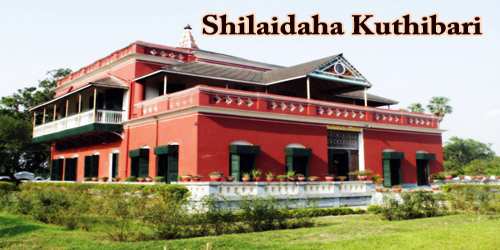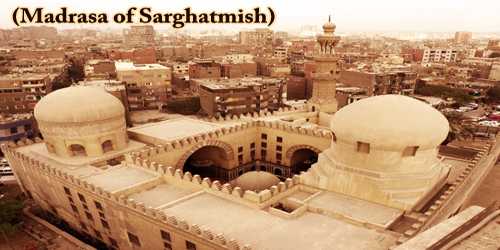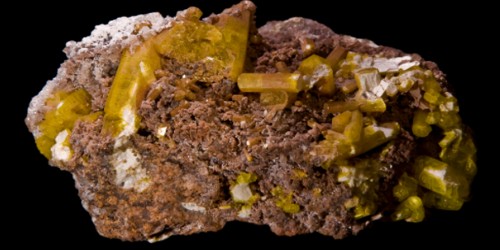Shilaidaha Kuthibadi (Bengali: শিলাইদহ) a historic place associated with Rabindranath Tagore and a tourist spot. It stands on the south bank of the river Padma in Kumarkhali Upazila in Kushtia district and is five miles north of the district headquarters across the river Gorai and opposite to the Pabna town on farther north across the Padma. The place is famous for Kuthi Bari; a country house made by Dwarkanath Tagore. Rabindranath Tagore lived a part of life here and created some of his memorable poems while living here. The geographic location of this place is 23°55’11.48″N, 89°13’12.11″E. Shilaidaha is also famous for the kachari (office) of the Birahimpur zamindari and the historic kuthibadi of the Tagore family of Jorasanko (Jorasanko kuthibadi). Shilaidaha is a relatively modern name; its old name was Khorshedpur. Before the Thakurs of Jorasanko acquired the village in the middle of the 19th century there stood an indigo-Kuthi reportedly built by a planter, named Shelly. A deep daha (whirlpool) was formed there at the confluence of the Gorai and the Padma, and hence the village came to be known as ‘Shelly-daha’, which ultimately took the form of ‘Silaidaha’.
The Kuthibari is a picturesque three-storied, pyramid-shaped, terraced bungalow, constructed with bricks, timber, corrugated tin sheets, and Raniganj tiles. The bungalow nestles amidst 11 acres of orchards of mango, jackfruit and other trees, a flower garden, and two ponds. Shilaidaha has an enchanting natural beauty and rural landscape. The Villa, enclosed within a boundary wall, is entered through a simple but attractive gateway on the south. It accommodates about 15 apartments of various sizes with a large central hall on the ground and the first floors. Each of the open terraces on the ground and the first floors is partly covered with a sloping roof of Raniganj tiles, while the central part over the ground floor has a pitched roof with gable ends. A short pyramidal crest farther variegates the roof over the second storey. Shilaidaha Kuthibadi is now a protected national monument where a Thakur Memorial Museum has been established by the government. The peace and tranquility the Kuthibari inspired Tagore to pen some of his most unforgettable verses thus contributing to the enrichment of Bengali Literature. Many prominent personalities scientist Sir Jagadish Chandra Bose, dramatist and music composer DL Roy and litterateur Promoth Chowdhury, visited Tagore at this location.
Tagore stayed intermittently between 1891 and 1901 at Shilaidaha Kuthibari. Sitting at Kuthibari or on a boat on the Padma, Tagore wrote a number of masterpieces such as “Sonar Tori”, “Chitra”, “Chaitali”, “Katha O Kahini”, “Kshanika”, most of the poems from “Naibedya” and “Kheya”, and songs from “Gitanjali” and “Gitimalya”. It was here, in 1912, that the poet started translating his “Gitanjali” into English, which earned him the Nobel Prize in 1913. The house was repossessed by a Bank; the Tagore Estate was a debtor to this Bank, who auctioned off the property and it became the possession of the Zamindar of Bhagyakul (Munshiganj), Roy family. The house was part of Roy Estate till the Zamindari system was abolished under the East Bengal State Acquisition and Tenancy Act of 1950. Syed Murtaza Ali, during his tenure as Divisional Commissioner of Rajshahi, took the initiative to preserve the dilapidated house in 1958. During this renovation, the color of the house was inadvertently changed to red like other houses belonged to the former Zamindars of the district. The reformation of Kuthi Bari has been completed under the Department of Archaeology, Ministry of Cultural Affairs. It now serves as a museum named ‘Tagore Memorial Museum’. Many of the objects Tagore used are displayed here, such as his bed, wardrobe, iron chest, lawnmower, framed pictures, and last but not the least his houseboat. The birth and death anniversaries of the poet are observed at Shilaidaha on a national level on 25th Baishakh and 22nd Shraban respectively. Many scholars from home and abroad attend these celebrations and take part in discussions on the life and works of Rabindranath. People from across the country as well as India and the rest of the world join this occasion to celebrate his birthday. The program includes discussion, cultural program, fair, and staging of his plays.
















